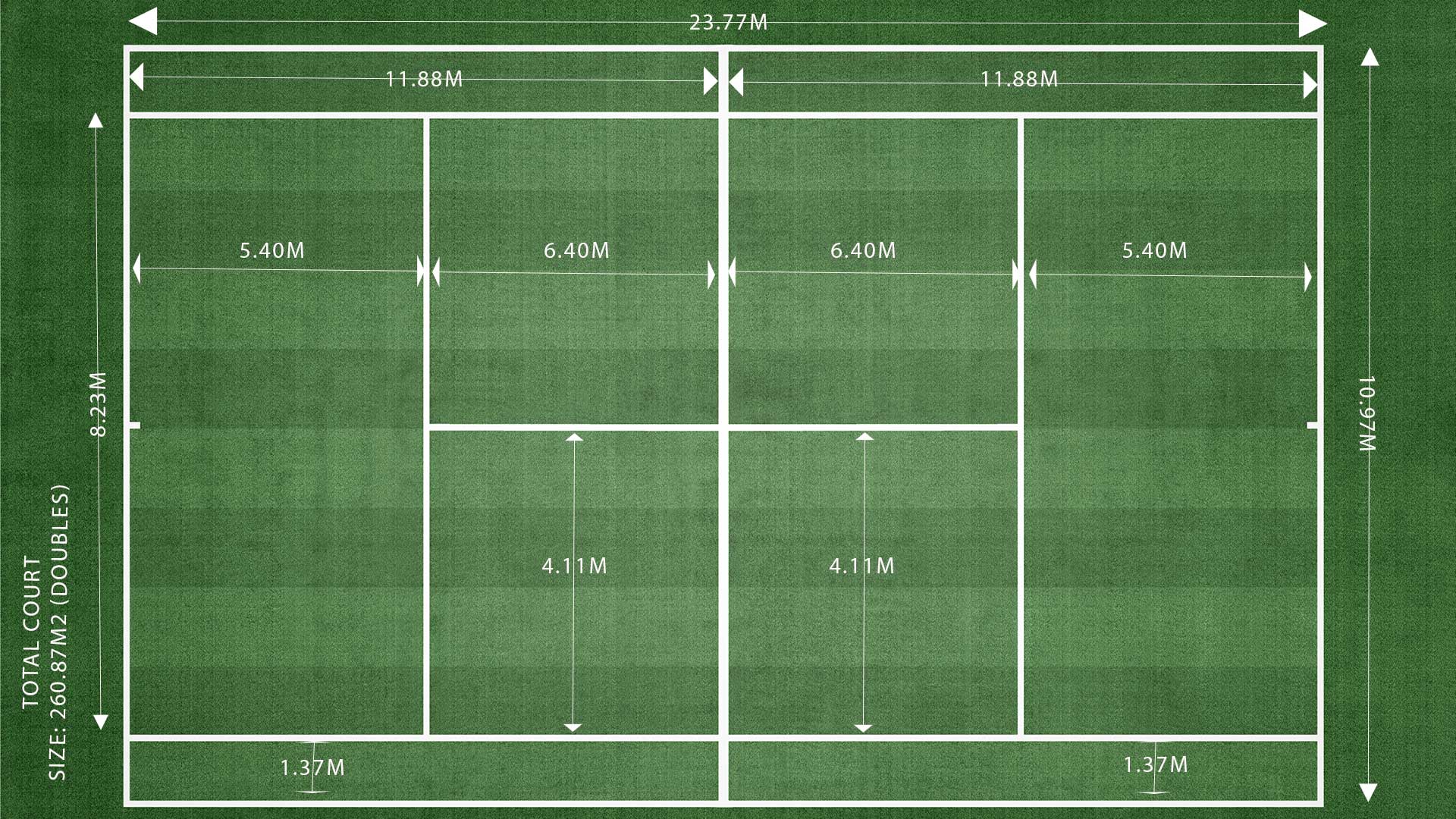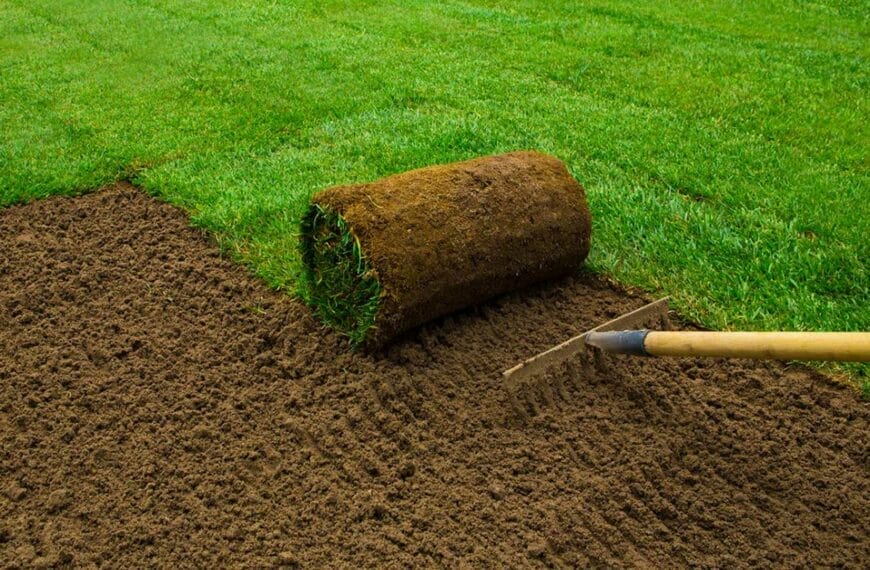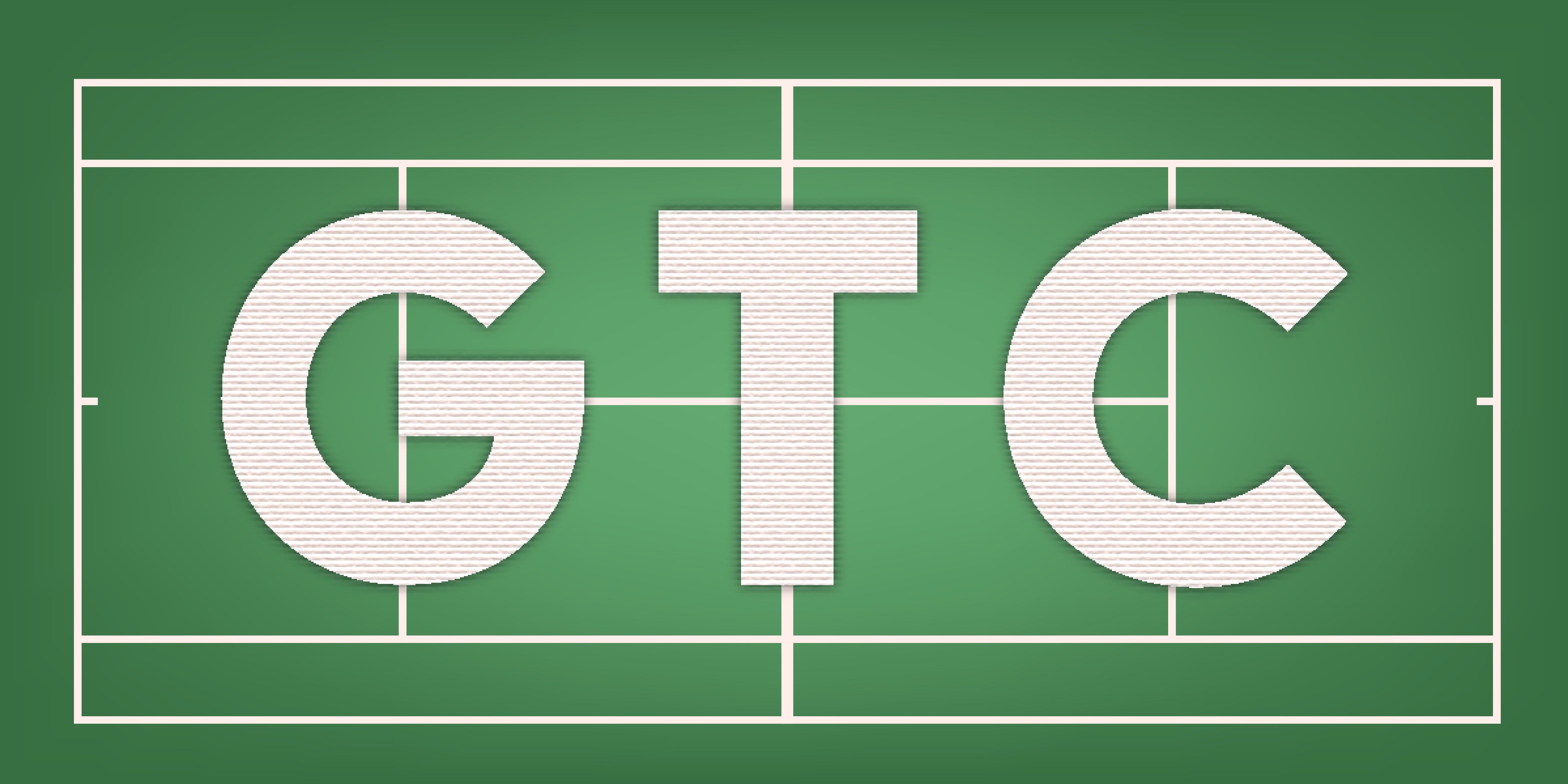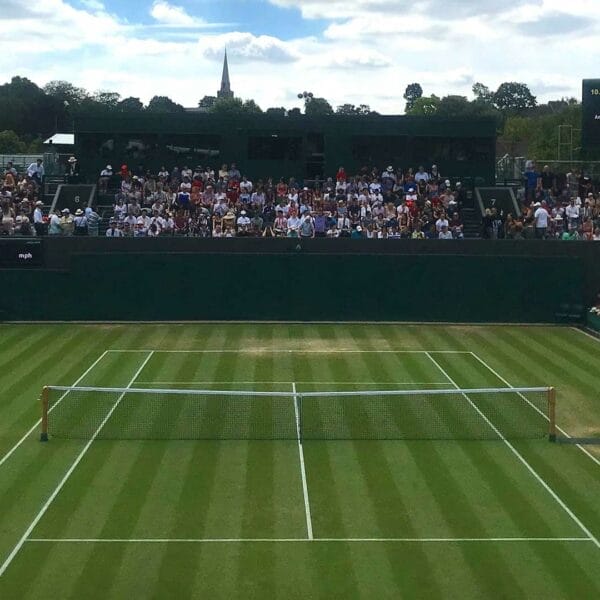Grass Tennis Court Dimensions
Detailed Explanation of Grass Tennis Court Dimensions
A standard grass tennis court, like all types of tennis courts, follows precise dimensions that ensure consistency in play. The image provided gives a clear layout of these dimensions. Understanding the precise dimensions of a grass tennis court is crucial for players, coaches, and enthusiasts alike.
From the overall court length of 23.77 meters to the unique differences in singles and doubles play, each measurement plays a vital role in ensuring the integrity of the game. This guide explores the specifics of tennis court dimensions, including the midcourt area, baseline widths, and net height, offering a comprehensive overview that aligns with the standards set by the International Tennis Federation. When you’re setting up a new grass court, knowing these details can make all the difference in your club.
Total Area
Total Playing Area (Doubles)
The total area of a grass tennis court for doubles play is approximately 260.87 square meters, including the full width and length of the court.
These dimensions ensure that tennis is played consistently across different venues. The grass court, known for its fast-paced play due to the low bounce of the ball, adheres to these exact measurements, providing a uniform playing experience.
The precision in these measurements is crucial, as even slight variations could impact the game’s outcome, given the speed and skill level at which tennis is played, especially on a grass court.
Overall Court Dimensions
Total Length
The total length of the court from baseline to baseline is 23.77 meters (approximately 78 feet). This length is the same for both singles and doubles play. The length includes the space from the back of one baseline, across the net, to the back of the opposite baseline.
Total Width
Singles Court Width: The width of the singles court is 8.23 meters (approximately 27 feet). This width is measured from the inner sidelines that are specific to singles play.
Doubles Court Width: The width of the doubles court is 10.97 meters (approximately 36 feet). This is the full width of the court, including the additional area provided by the doubles alleys.
Service Boxes
Service Box Length
The service box is the area where the ball must land during a serve. Each service box has a length of 6.40 meters (approximately 21 feet).
Service Box Width
The width of each service box is 4.11 meters (approximately 13.5 feet). The two service boxes are positioned on either side of the net, separated by the center service line.
The Midcourt
The term “midcourt” in tennis typically refers to the area between the service line and the baseline, spanning the width of the court. Let’s break down the dimensions of this area:
Dimensions of the Midcourt
The distance from the service line to the baseline is 6.40 meters (approximately 21 feet). This measurement applies to both singles and doubles play, as the baseline and service line positions do not change between these formats.
For doubles play, the width of the midcourt extends to 10.97 meters (approximately 36 feet), covering the full width of the doubles court, including the doubles alleys.
Net Dimensions
The net runs across the center of the court, dividing it into two equal halves.
Net Length
From Outer Post to Outer Post: The net is stretched across the full width of the court. The distance from one outer post to the other is 12.80 meters (42 feet). This includes the court’s width for doubles play (10.97 meters or 36 feet) plus the additional 0.91 meters (3 feet) on each side where the posts are placed outside the doubles sidelines.
Net Height
At the Center: The height of the net at the center is 0.91 meters (3 feet). This is the lowest point of the net and is maintained consistently across all court types, including grass.
At the Posts: The height of the net at the posts is slightly higher, at 1.07 meters (3 feet 6 inches). This gradual increase in height from the center to the posts ensures that the net is properly tensioned and maintains a uniform height across its entire length.
Additional Court Features
Doubles Alley Width
The space between the singles sideline and the doubles sideline is known as the doubles alley. Each doubles alley has a width of 1.37 meters (approximately 4.5 feet). This area is only in play during doubles matches.
Baselines and Sidelines
The baselines, which mark the back boundaries of the court, are situated at the two farthest points on the court, and the sidelines mark the side boundaries. In doubles, the outermost sidelines are used, while in singles, the inner sidelines are used.
Width of the Baseline
Singles Play Baseline Width
n singles play, the baseline width is consistent with the court’s width for singles, which is 8.23 meters (approximately 27 feet). The baseline in tennis is the line at the farthest back of each side of the court, marking the boundary beyond which the ball is considered out. The baseline itself is typically about 10 cm (4 inches) thick, though some courts might have slightly thicker lines for better visibility.
Double Play Baseline Width
In doubles play, the baseline width expands to match the full width of the court, which is 10.97 meters (approximately 36 feet). The thicker line is intended to give players a clear boundary for the back of the court, especially crucial during fast-paced rallies. Like the singles baseline, the doubles baseline also usually has a thickness of about 10 cm (4 inches).











